This was published 2 years ago
Seven of the world's peak propaganda palaces aren't where you expect them to be
By Steve Madgwick
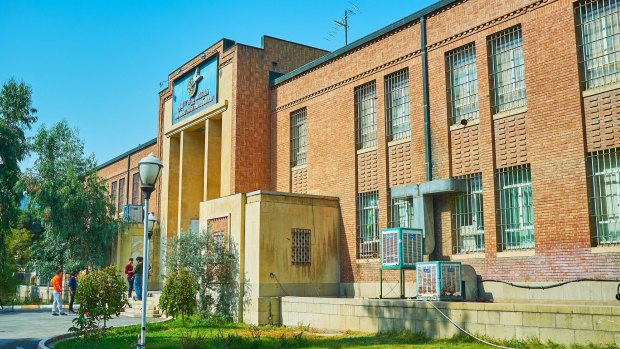
The 'Den of Espionage' in Tehran, Iran.Credit: Alamy
Despite the impenetrable sounding name, it's relatively easy to infiltrate Iran's Den of Espionage, once you negotiate the psychological booby traps in the surrounding Garden of Anti-Arrogance.
A skeleton-faced Statue of Liberty mural snarls from the exterior of the Den's barbed ramparts. Lady Liberty graces entrance tickets, too, caged in a red circle struck through with the diagonal line of prohibition, Ghostbusters-style. The path through the Garden of Anti-Arrogance is hedged with posters defiling cherished American institutions, from KFC to the Oscars.
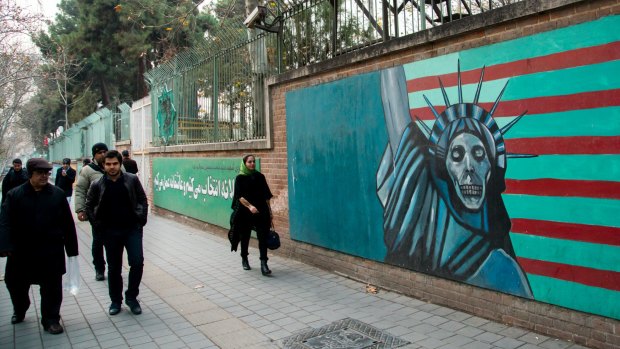
A flaking US presidential seal above the front entrance uncloaks the "US Den of Espionage's" former existence: it's "that" American embassy, stormed and captured by 400 revolutionary college students, a flashpoint of 1979's Shah-dethroning Iranian Revolution. Fifty-two US diplomats and citizens were held hostage for 444 days in this founding relic of the Islamic Republic in downtown Tehran.
It was transformed into a museum in 2015, apparently at least partly to counter Ben Affleck's Hollywood-isation of revolutionary events in the film Argo. It is, in theory, the perfect propaganda palace.
Inside its thick, bureaucracy-green walls, the Den is frozen in 1970s-CIA chic; exactly the way the Americans left it (probably somewhat re-staged). Its vault-like rooms are anchored by period typewriters, banks of telex machines, and hulking, wall-mounted super-computers of ambiguous function. Droning fluorescence illuminates sinister dummies comically propped up in the sound-proof "Glassy Room for Top Secret Negotiations", presumedly where the US's alleged or actual espionage went down.
Earnest tour guides recite tales of spying and mass document shredding, painting Argo's storyline as treacherous Hollywood subterfuge. They don't appreciate the hilarity in the Den's John-le-Carré-esque descriptors either (apparently, appalling translations by a professor who exaggerated his English credentials).
Intriguing as it may be, the Den of Espionage is a propagandic belly-flop. Its melodramatic messaging may have roused Iranian emotions a lifetime ago, but locals universally pan it (my taxi-driver couldn't find it). International visitors come only for the freak-show appeal, just as they do to the world's most dogmatic dictator tribute: the Joseph Stalin Museum in Gori, Republic of Georgia (the former-Soviet-despot's birthplace).
Inside the daunting "Stalinist Gothic" palace, Stalin's image is everywhere: from carpets and parquetry to mosaics and busts. His death mask even has its own macabre lair.
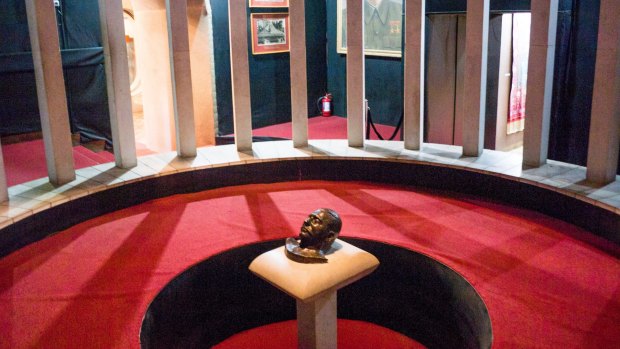
Credit: Getty
Visitors are force-fed a saccharine propaganda porridge: Stalin the accomplished poet; Stalin the canny chess-player; a man showered with extravagant gifts from doting world leaders. Foreigners looking for ironic souvenirs and older Georgians (some apparently still fond of their countryman) browse the merch salon for totebags and t-shirts.
However, the unabashed tribute song basically skips a crucial verse: 20,000,000 deaths attributed to Stalin's blood-splattered reign. The elephant in the room is inadequately addressed with one half-hearted exhibition shoehorned under a staircase, which references the prisons of Siberia as if they grew organically. Mea Culpa this is not, but as the brute himself reportedly said: "A single death is a tragedy; a million deaths is a statistic".
We expect asymmetric information from current and former totalitarian regimes (or any place with "Democratic' or "People's" in the title). You don't wander into Mao's Mausoleum on Tiananmen Square expecting an open debate about the Cultural Revolution or glean an objective history lesson on the top floor of the State Museum of History of Uzbekistan.
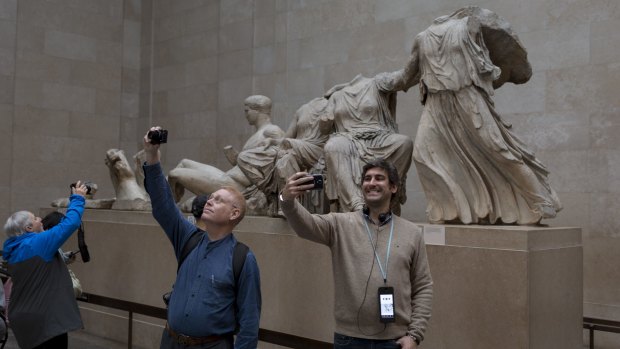
Credit: Richard Baker/Getty
But do we turn our critical senses towards institutions of the so-called free world that "talk the talk"? London's British Museum spoons on loaded, high-minded chicanery as thick as anywhere, positioning itself as a luminary of human history and culture, and championing "critical scrutiny of all assumptions, open debate … progress and tolerance".
Yet from its culturally appropriated Greek Revival facade, the museum is a temple of colonialism as an edifying force; full to the eyeballs with priceless artifacts pillaged from venerable countries that Britain "saved". Artifacts, like Greece's Elgin Marbles and untold African cultural richness, that the Brits simply won't give back. This is not a hangover from the colonial past – the British Museum is still drunk from the night before.
Across the Atlantic, the US's faceless agencies are masters of soft propaganda, peacocked perfectly at NASA's Space Center Houston. The 70-minute tour/indoctrination of the huge facility waves both the stars-and-stripes and red flags of propaganda furiously.
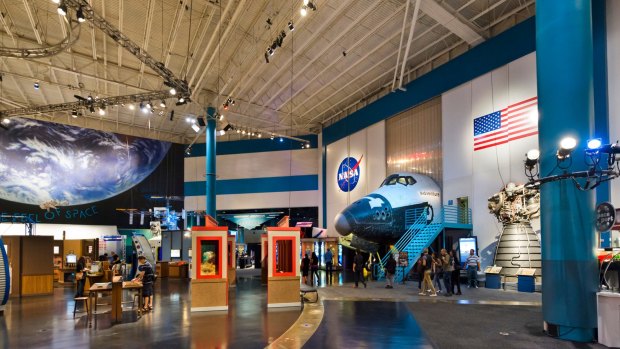
Credit: Alamy
Inspirational hero music strategically scores the glory-ride. Schmaltzy films beatify NASA's everyday successes (from memory foam to freeze-dried food). Every un-balanced element is unsettlingly on-brand, down to NASA's humourless in-house cops (I double dare you to ask them where the moon-landing "set" is. It didn't go well…)
By telling you where to look, by default, these institutions are telling you where you shouldn't. The understated memorial to the Space Shuttle disasters don't encourage dialogue about the agency's alleged culpability. And the "Houston we have a problem" control room is not exactly the forum to discuss the alternative social uses for the billions of dollars funnelled into NASA since mid-last century.
No longer the Cold War propaganda necessity it once was, NASA struggles for relevance in an internationalised and corporatised space race. "Getting to Mars will be hard but NASA is up for it," spouts a retro gift-shop poster. Classic propaganda designed to tug at heartstrings and open government coffers. And, as with the British Museum, wide-eyed humans line up to infinity for their turn.
Money is political power in this age of hyper-consumerism, and armed with small country-sized marketing and PR budgets, faceless cash-rich corporations often outperform governments at making the unreal real and the mediocre amazing.
Amsterdam's Heineken Brewery Experience is several glasses of masterclass in this regard. Suspiciously rosy-faced Dutchmen and Dutchwomen in green suits beguile visitors with slick flim-flam to convince the masses that mass-produced beer is as fresh as a babbling stream, as Dutch as kaassoufflé. Naturally, everyone drinks the Kool-Aid at tour's end.
Nothing disarms propaganda like a good hard serve of context. A daytrip from Seoul to the Korean DMZ (the demilitarized zone between South and North) is peak "tour de context". South Korea's Dora Observatory looks down across the fortified border to North Korea's Potemkin-esque Peace Village (dubbed "Propaganda Village" by the South). Distant loudspeakers throb with repetition under a phallic North Korean flag; its flagpole deliberately taller than the South Korean one.
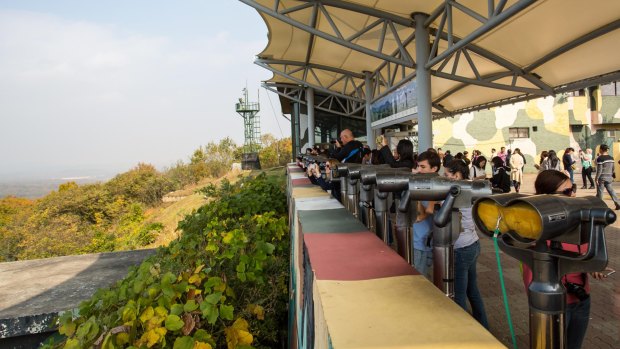
Credit: Alamy
Despite being on the "right side of history", South Korea's Freedom Village experience oozes boorish political messaging; passive-aggressively tarring the North's entire population as uncivilized barbarians. The day trip's 20-minute "history film" sells its message harder than proprietors of the ginseng and DMZ-brand-chocolate stalls outside do.
One place befuddles problematic definitions of propaganda more than any. On the surface, the War Remnants Museum in Ho Chi Minh City, Vietnam, is a one-sided broadside against the American war efforts in Indochina last century.
Exhibits weave a heinous narrative, especially unemotionally captioned black-and-white photographs of injured and deformed children, "collateral damage" of carpet-bombing and chemical-warfare campaigns. The museum's coup de grâce, however, is a simple rebrand: supplanting the name "the Vietnam War" with "the American War".

Credit: Alamy
Is this propaganda? Counter-propaganda? Or is it one nation's truth, a flailing attempt to balance America's omnipotent Dudley Do-Right, free-the-world narrative?
In 2021, propaganda still stalks us, evolving quickly, seeking the ears of the unwitting beholder. Which is why, in this privileged, information-rich time, it's crucial to recognise echo-chambers, actual or virtual, for what they are, and plow forth on contextual quests for second and third opinions.
Propaganda palaces crack open uncomfortable truths. One country's victory is another's loss, and one person's terrorist is another's freedom-fighter, as the sayings go. But they also offer poignant reminders. Like the difference between an elected official you disagree with and a real dictator is measured in millions of human lives.
See also: How I learnt the true meaning of a 'Do not travel' warning
See also: The city where commuters travel in rickety 'flying coffins'
Sign up for the Traveller newsletter
The latest travel news, tips and inspiration delivered to your inbox. Sign up now.